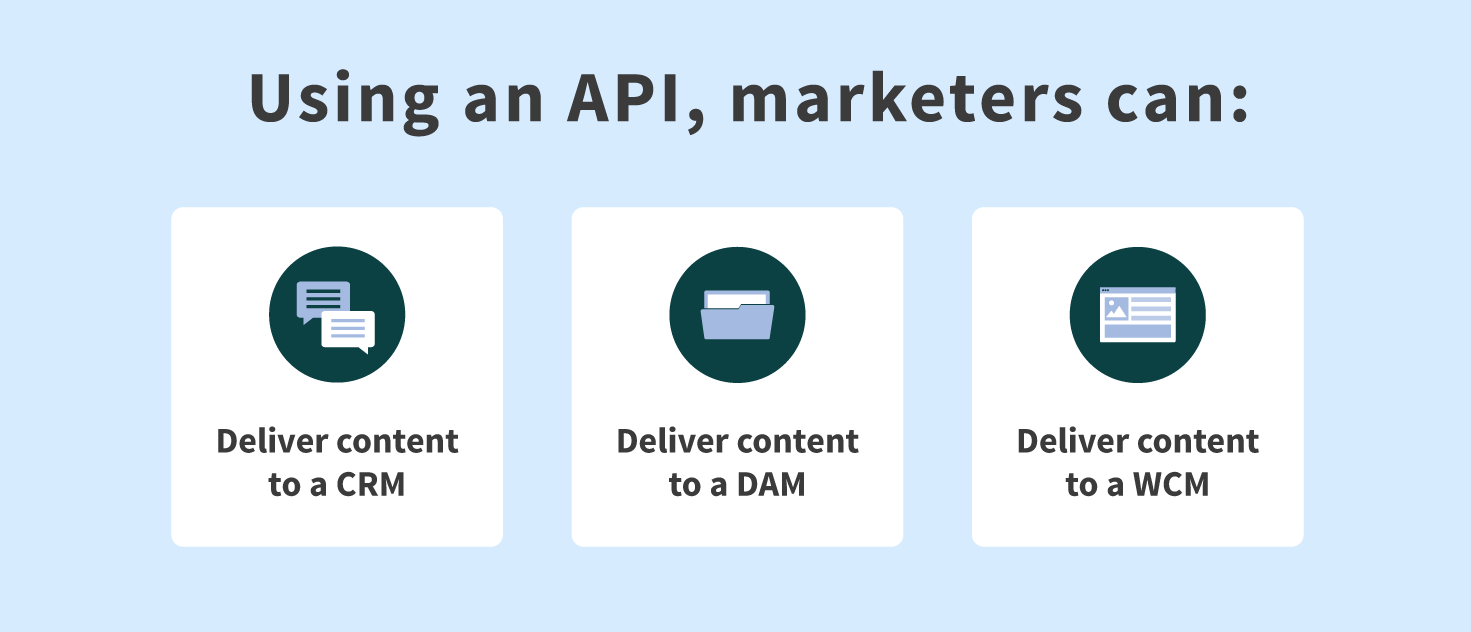What is an API?
An API (acronym for Application Programming Interface) creates connections between your applications or systems. Essentially, an API allows one system to talk to another system and share specific information. An API can help create these essential connections within your tech stack to reduce manual effort in finding, locating, and sending content while simultaneously ensuring that only the latest, approved content is in use
Here are 5 ways to use an API to improve your regulated content management and ensure your latest content is being used in the field.
Deliver content to your sales enablement tool
When your sales team is trying to land a deal with a prospective client, they’re operating on a tight schedule with goals and performance incentives in mind. Things can get hectic when a rep is getting ready to Zoom and asks marketing, at the last second, which version of a document is the correct one. Integrating your promotional review system with your sales enablement tool can bring the temperature way down between marketing and sales (and bring sales’ conversion rate way up).
By utilizing an API to deliver content to your sales enablement tool, your teams always have access to the latest, approved content. Sales can immediately access the information they need in the field and make the most of their interactions with clients, HCPs, KOLs and other key stakeholders.
Deliver content to call center
Customers today expect a lot out of customer service interactions. In life sciences, customer service agents must provide technically specific and sometimes proprietary information on the fly; information they can’t Google if they’re stuck.
During a customer call or chat, it’s critical that your call center has accurate, up-to-date information at their fingertips, not hidden away in email attachments. Integrating your content review system with your call center lets your customer service reps access the latest FAQs, product information, and other materials directly so their answers are always correct and helpful.
Deliver content and important content details to a customer relationship management system (CRM)
Your CRM is your single source of truth for client interactions, so it’s the foundation for making the most out of each relationship.
An API can deliver approved content from your promotional review system to your CRM and associate it with certain contacts or companies. You can also deliver important metadata to your CRM such as the target audience for a content or intended use info. This not only attaches meaningful information to content available in your CRM, but can also create connections between content and contacts (i.e. what content has been shared with what contact and for what purpose).
Deliver content and important content details to a digital asset management tool (DAM)
Getting all of your digital assets in one place–including marketing materials–is crucial to digitally transforming your content operations.
Collecting, organizing, and updating content in one place manually can lead to the same confusing array of multiple file versions you’re trying to get away from by implementing a DAM tool. Setting up your promotional review system to deliver files directly to your DAM solves that problem and sort all of your files by product or disease state for a full 360 view of what digital assets you have at your disposal. Pro tip: utilizing a promotional review system that doubles as a DAM makes this even easier.
Deliver content to a web content management system (WCM)
Your website is the public face of your brand and company. So timely, web-friendly marketing materials represent some of your most important promotional content.
When you publish content on your website, the world sees. And neither the web team nor the marketing team likes hearing that the wrong content is live. Delivering approved marketing content from your promotional review team directly to the WCM, and being able to modify it immediately, means your webpages will always be as accurate and up-to-date as possible.
Streamline your entire content operations
Everyone in a life science company wants the information they share–with clients, shareholders, customers and anyone else–to be accurate and compliant.
By securely delivering your content from your promotional review system to your various downstream systems, you can maintain compliance, save your team time, and ensure that all departments are working together as effectively and efficiently as possible.

